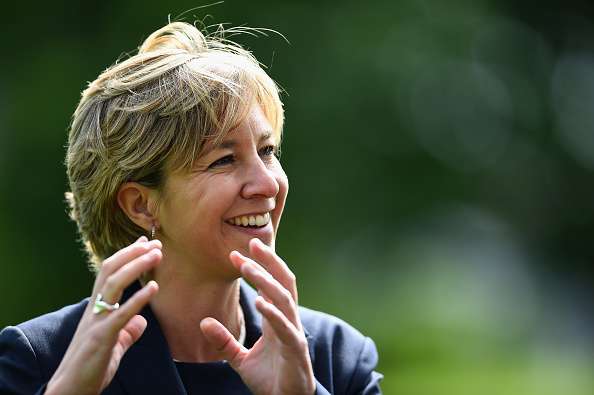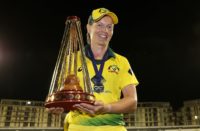Sofia Westaby meets the administrator who is helping change the face of women’s cricket
Cricket’s history is steeped in segregation and categorisation. The Victorians divided men by their social standing into ‘gentlemen’ and ‘players,’ which remained in cricket until 1963. A birthright rule existed at Yorkshire until 1992 and it was not until 1998 that women could be admitted into the MCC.
So when you think how divided cricket once was, it is extraordinary to see the integration that has so far been achieved, particularly in the women’s game.
And much of that is down to the leadership of Clare Connor.
No stranger to responsibility, Connor captained England to five series wins in six years, culminating in her ending the women’s 45-year Ashes drought in 2005.
Stepping into her office at the ECB – where she is director of women’s cricket – is humbling. It is evident that what drives her is the team; both in terms of those who sit outside her door in the main office promoting the women’s game and the players themselves whose smiling faces adorn her office walls.
But Connor certainly never expected that it would be her who would spearhead the change in the women’s game; “I had no aspiration of being an administrator.
“I didn’t really give that any of my thinking time. I thought I’d retire from playing and would go on and teach English literature and hopefully be a head teacher. But I really didn’t expect to be in this role.
“I was passionate about literature and it had been the career that had worked alongside my playing days, so it was a really tough decision and a massive gamble to leave teaching.
“I didn’t know quite what, but I could see that there were huge possibilities and potential for England women’s cricket.”
Since accepting the role in 2007 she has overseen unprecedented change to her sport.
“When I came we were well under 50 per cent in terms of integration and the women’s game’s ability to capture the collective imagination of the organisation.
“I’d say we’re probably at 80 per cent now. But, I want to be able to say that, 100 per cent, every person in the organisation gets the potential and importance of the game for women and girls.”
Part of this integration has been achieved by the awarding of the central contracts last year.
And for many this significant step forward would be enough, but Connor has her sights firmly set on achieving more through the launch of what she hopes will “be the envy of the men’s game” – the Women’s Super League.
“It starts as a t20 event next August,” Connor explains.
“We’ve seen in the Big Bash and IPL that t20, rather than a spaced out programme of cricket, works. But then from 2017 it’ll become a 50-over competition as well.”
“We realised that a new premier competition was needed for the women to underpin the contracts and the international environment, but also to drive participation for the game.
“We aim to communicate not just with counties but with the game as a whole, so any cricket-minded organisation could throw their hat into the ring and could be awarded hosting rights for the four years.”
The Super League will be the first domestic competition in English cricket to break with county traditions and follow a franchise model.
However, Connor is clear that “all first-class counties are in the mix and some Super League hosts could be stand alone counties, but with a different identity.”
Though, she says: “As it fully evolves county cricket will move from being a national competition to regional competitions.
“It’s what all the feedback from county cricketers is telling us they want as they are being stretched.”
However, this evolution is dependent upon the success of the tournament and that will be decided by how many cricket fans, of both genders, engage and buy into the idea.
Already, though, the signs are good.
A record 22,000 people attended the women’s Ashes this summer – the first to be broadcast live on Sky Sports – a response that left Connor and her ECB colleagues “staggered”.
“We sensed that it would be a big Ashes summer, but I think we were all stunned by quite how big.
“We’ve been front and back page in the written Press, we’ve smashed record viewing figures and we’ve staggered Sky in terms of the women’s viewing figures compared with men’s domestic cricket.”
So what is driving the success of the women’s game? Is it simply that they have tapped into the nation’s new-found appreciation of women’s sport?
Partly. But I also think that Connor and her team have been clever in marketing the women in a way that allows them to be far more open and accessible to fans and the media than the men.
“The reason that we’ve had so much success and the reason that they are perceived to be the brilliant role models that they are is because of the access.
“The players by their own definition want to be accessible, they want to recognise their responsibility and they are our biggest asset.
“Our marketing is around keeping them accessible and not distancing them from the grassroots end of the game and using them as powerful advocates for the sport.
“I think it has been seen as a gold standard and I think there’s now a really a big push around the men’s team, with these young superstars like Root, Stokes and Wood, to be more open and more connected.”
Of course, there are challenges ahead. The Women’s World Cup in 2017 “is a bigger challenge because we’re not on free-to-air television, so we are going to have to work out how to maximise its reach through other methods”.
But I ask if she is envious of what women have now.
“I think where the game is now is what I would have loved. It’s not about a contract or being paid, but actually the global events, the women’s Championship and the standing of the women’s game. I think that’s exceptional.”
This piece originally featured in The Cricket Paper on Friday November 6, 2015















